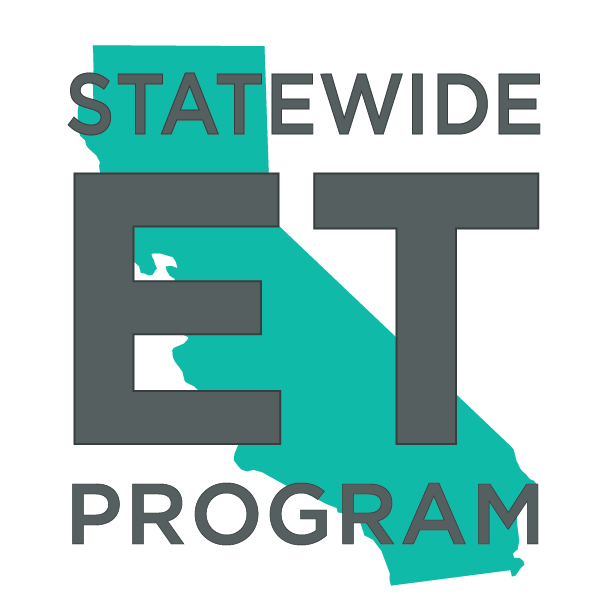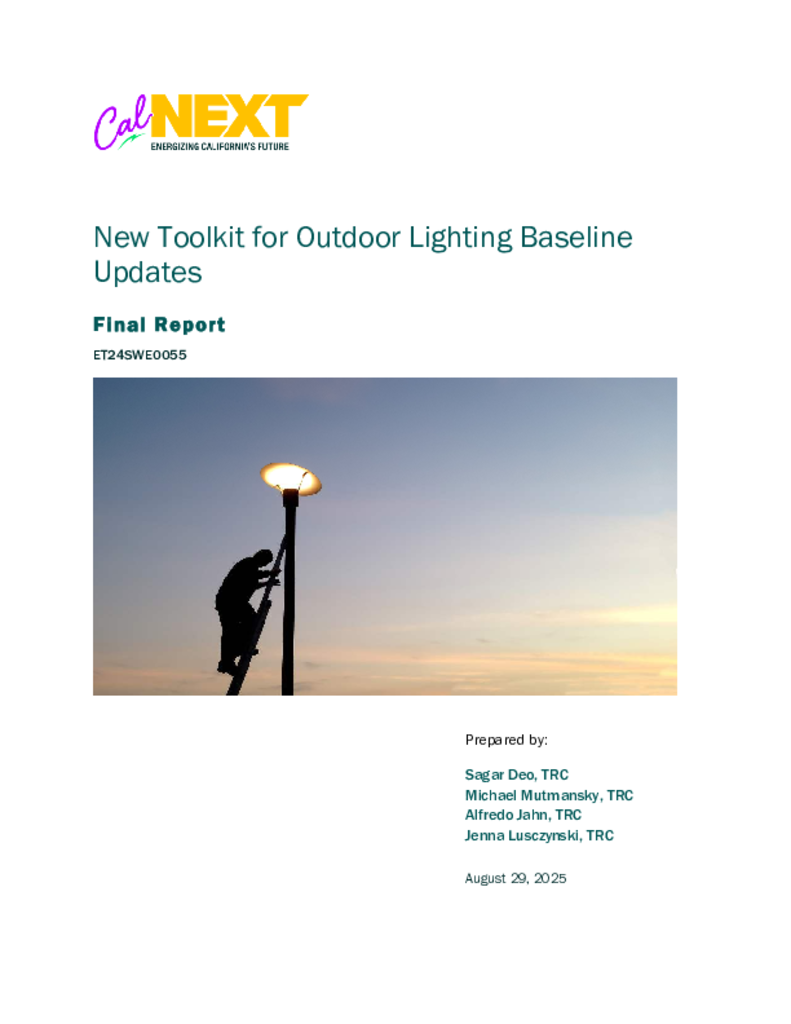ET24SWE0055 - New Toolkit for Outdoor Lighting Baseline Updates
Outdoor lighting systems have evolved considerably in the past twenty years since the first California outdoor lighting baseline assessment project was completed in 20031. When the 2003 study California Outdoor Lighting Assessment study was completed, LED fixtures didn’t exist in any form and Metal Halide (MH) lamps were the primary light source chosen for parking and other high-output applications in the commercial space. Most roadway applications utilize High-Pressure Sodium (HPS) lamps due to long life expectancy and high lumen maintenance.
This project will explore and characterize new methods for collecting performance information on installed outdoor lighting systems. These new methods will account for the added difficulty that LEDs and controls have brought to audit activities. Our approach will be to convene a technical advisory group (TAG) of lighting and data collection experts who will establish required data fields (and proxies where primary data are unavailable) and reach a consensus on the best available data collection methods.
In the 20 years since 2003, LED light sources now dominate the outdoor lighting market in new construction and there has been a considerable push towards LED technology in existing stock through retrofit programs and equipment attrition. LED sources are more efficient but are also an enabling technology for much more sophisticated outdoor lighting controls including instantaneous on/off capabilities and dimming to 20% or lower of full output. These new capabilities enable the application of more advanced outdoor lighting control approaches and technologies, including motion-responsive switching and dimming, time-of-night scheduling, addressable control heads, and more. The 2003 baseline study showed many property types without installed lighting loads approaching the load limits for “continuous” site lighting. Many sites were well below the lighting power allowances. Consequently, lighting savings potential is overstated in calculations using fully-lighted site conditions for the prototype buildings.
Furthermore, in 2003, outdoor lighting controls consisted of photocells and/or timeclocks with relays to manage the loads on multiple circuits. There were scant opportunities to effectively utilize motion sensors in commercial situations because the light source technology didn’t allow suitable response times for an interactive lighting controls approach. In part based on the original 2003 baseline study, California developed outdoor lighting codes that were adopted in 2008 and have been revised every three years as light source and controls technology have improved. However, the baseline study hasn’t been updated. An outdoor lighting baseline provides information for program and codes and standards development and is fundamental to establishing the opportunity presented by old and outdated technology and control approaches. Because the outdoor lighting market is more complicated than it has been in the past, the old methods of field surveys that were employed for the 2003 baseline study will not be reliably effective today.
New methods for lighting field surveys are required to ensure that an accurate assessment of site equipment, connected load, and nightly load profiles are developed for making an accurate assessment of the state of the outdoor lighting stock in California. This project will explore and characterize field study methods for verification of outdoor lighting loads to account for the effect that the evolution of lighting technology over the past two decades has had on the baseline. This project is a required pre-requisite for ensuring future statewide outdoor lighting baseline field studies can meet the data needs for future programs and codes and standards development. A follow-on project is planned that will validate the proposed toolkit in the field
1 https://newbuildings.org/wp-content/uploads/2015/11/A-18_CA_ODL_Assessment_7.7.21.pdf
The primary goal of this study is to develop a new toolkit for conducting an outdoor lighting baseline study for California. This project and subsequent baseline study is crucial for updating the assumptions used in energy efficiency program design, codes and standards development, and for validating baseline energy load profiles in eTRM. Given the significant advancements in outdoor lighting technology since the last baseline study in 2003, an update to the information used to establish nonresidential outdoor lighting energy consumption is both necessary and warranted.
The project team developed a framework to categorize different types of data pertaining to outdoor lighting into static and dynamic attributes and different data collection methods into high fidelity and low fidelity methods. The team implemented a hybrid approach using both high and low fidelity methods to balance accuracy and resource constraints. This involved developing a sample of sites, applying both high and low fidelity methods to a sub-sample, and using inference models to enhance the data for sites collected only using the low fidelity methods
The project team conducted a comprehensive review of promising high fidelity and low fidelity data collection methods.
The integration of both methods supports the development of an inference model to interpolate across gaps in low fidelity data. Using the inference model will enable the project team to combine the precision of high fidelity data and the scalability of low fidelity data by helping train predictive relationships between data collected using low fidelity methods and true values confirmed via high fidelity methods. This allowed the project team to estimate key static and dynamic attributes for a much larger number of sites by applying calibration adjustments to data collected using low fidelity methods.
Based on the analysis, stakeholder engagement, and evaluation of various data collection approaches, the project team offers the following actionable conclusions and recommendations:
1. Future data collection efforts should incorporate greater use of low fidelity data collection methods because they demonstrate potential for scalability and ease of implementation, and can enable rapid, cost-effective data acquisition, particularly for static attributes.
2. The inference model proposed in this study should be used as a core component of future baseline efforts. The model can be trained to calibrate or predict key lighting attributes across the full dataset by integrating data from high fidelity and low fidelity collection methods. This approach will help reduce overall costs and labor requirements while preserving accuracy.
3. Conduct a focused follow-up project to pilot the shortlisted high fidelity and low fidelity data collection methods in real-world conditions to assess each method’s viability, cost, and accuracy.

